
NOTE: All content on otterine.com is copyrighted and may not be reproduced in part or in whole. It takes a lot of time and effort to write and photograph for my blog. Please ask permission before reproducing any of my content. (More on copyright)

Hexagon clay tiles, part 2
Continuing work on the hexagon clay tiles. The bottoms of the clay pieces turn out shiny from the ceramic tile base, so I sanded them lightly before gluing. I also lightly sanded the mdf floor board.

I used Weldbond to glue to the tiles to the floor board. I made roughly 30 groupings, and some fell apart in the process. Those I used to piece between and around the larger groupings.
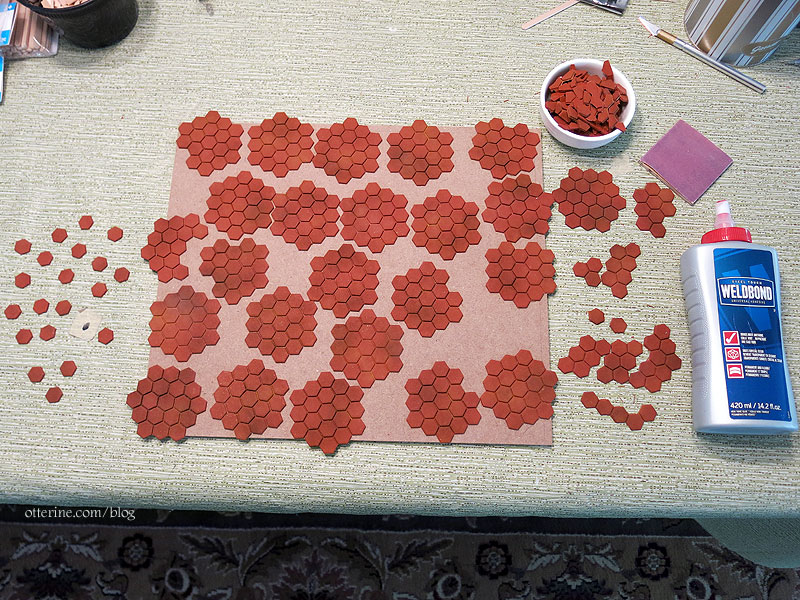
Since the individual hexagons had different measurements across depending on their orientation, I needed to make sure all of my hexagons were going the same direction. I measured each grouping and individual tile before gluing in place. I wasn’t guaranteed to have perfectly uniform application, but this gave me a fighting chance. :D
I started by laying out the edge sections and by luck ended up with full tiles front to back and side to side.

Since the tile groupings were unstable, I used a putty knife to pick them up and handle them.
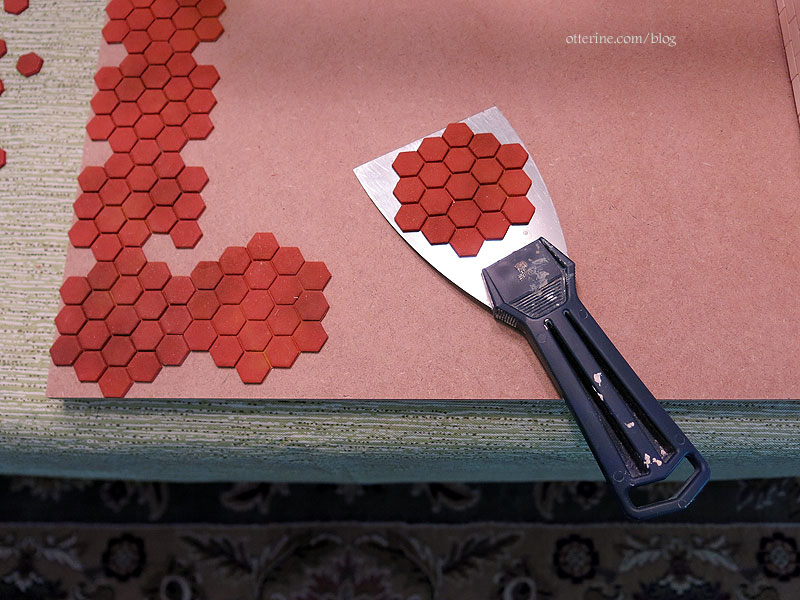
I tried to keep the groupings intact as much as possible, leaving small sections to piece later.
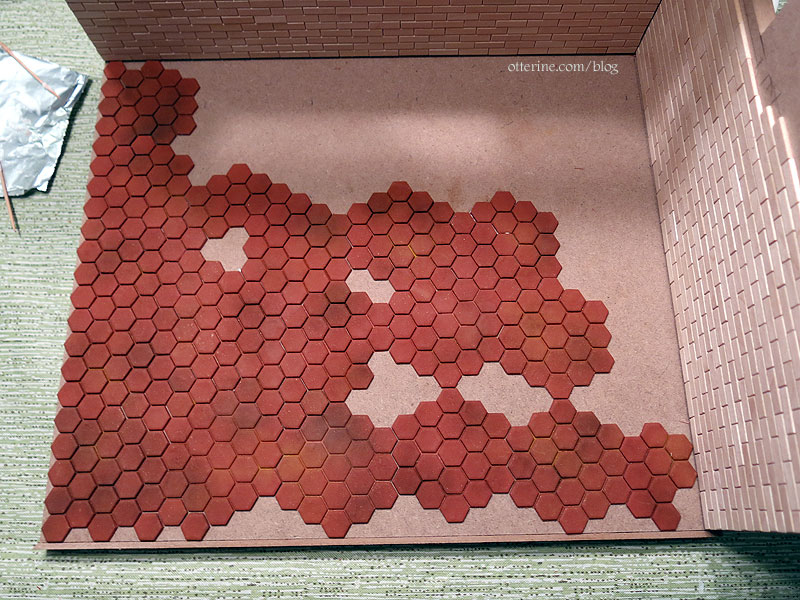
My bowl of scraps helped fill in the edges. Tedious, but I kept at it!
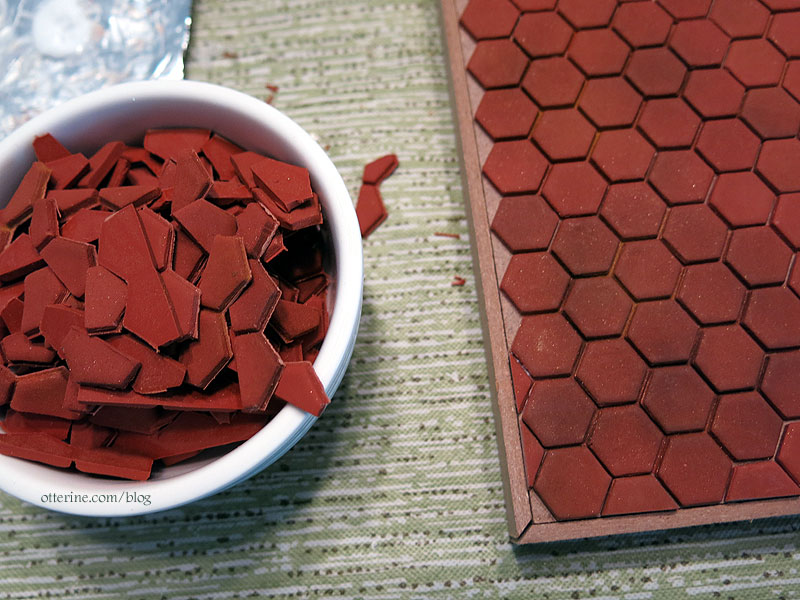
Hooray! :D
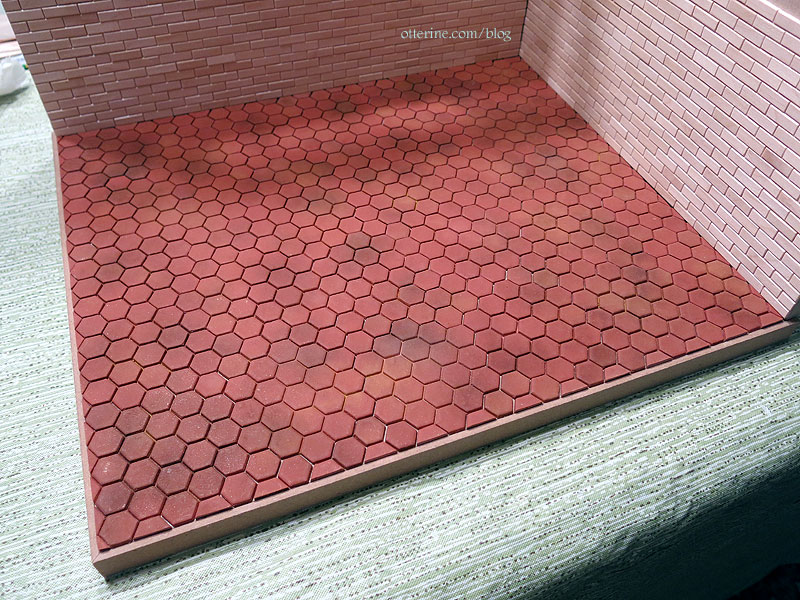
There’s finishing trim for the base on the front and side, but I didn’t apply tile all the way to those edges. I will add strip wood around the tile to protect and finish the edges. The spacing didn’t end up completely uniform but it’s close enough that it shouldn’t be obvious after grouting.
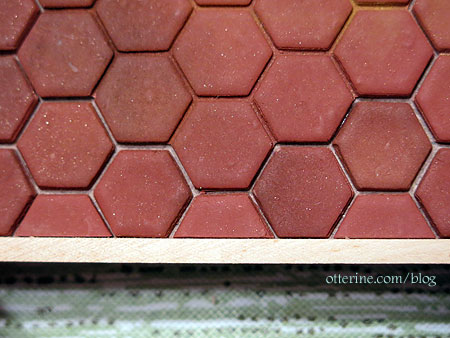
Categories: Polymer clay, Whinnie's Terrace
November 3, 2020 | 0 commentsHexagon clay tiles, part 1
For my project, I envisioned hexagon terracotta tiles. You can buy these already made, but that can add up quickly. I also wanted to see if I could do it myself since I’ve worked with clay before. I bought Original Sculpey in terracotta. I have a ceramic tile working base, roller and cutter I found on eBay. More on the cutter in a moment.
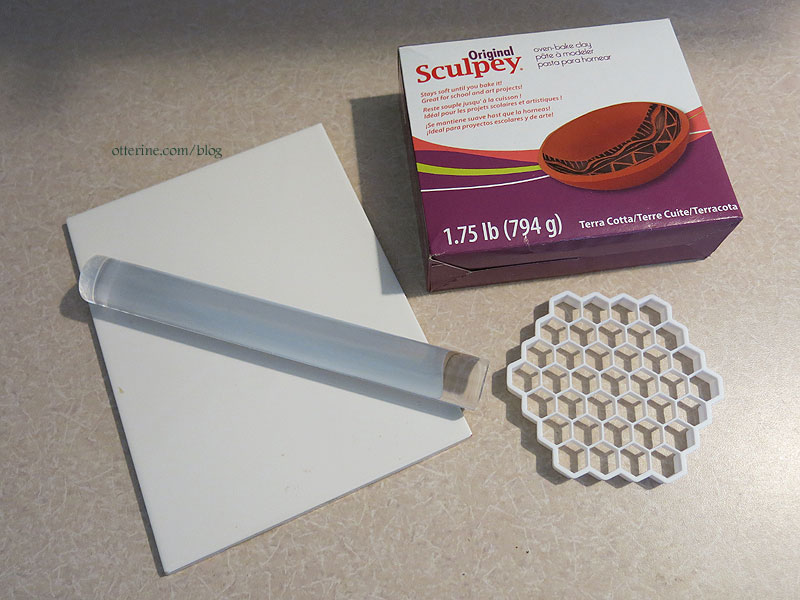
I taped 1/16″ thick basswood strips to the ceramic tile and rolled out the clay. It’s soft and easy to work with. I had to cut away the edges a few times as the clay spread out.
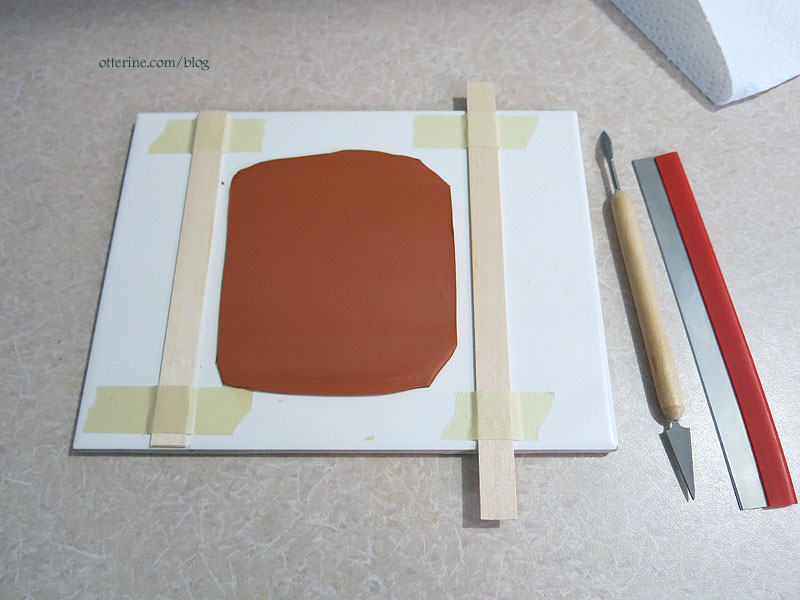
I’m using bronzer (make-up powder) to dust the cutter since I didn’t want white powder contrasting with the color of the tiles. It has some shimmer to it, which is a nice surprise. Very upscale tile made with gold dust. I did get too much bronzer on the first batch, but I was able to tone it down on the subsequent batches. The first batch will be my test sample for grouting and finishing.
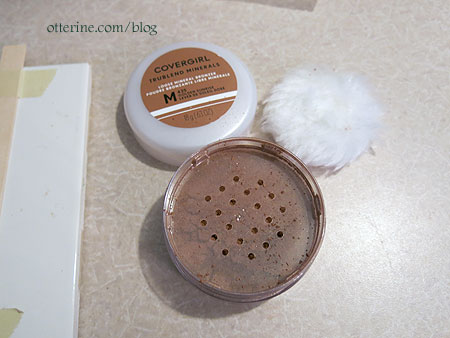
The cutter is designed to cut cookies/biscuits and leave a honeycomb design in the middle, so it has a deeper outer edge than the center pattern.
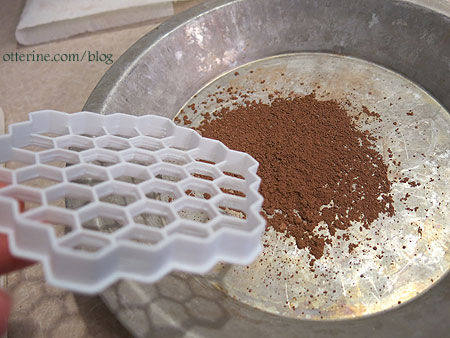
But, the other side is very uniform, so I just used it upside down.
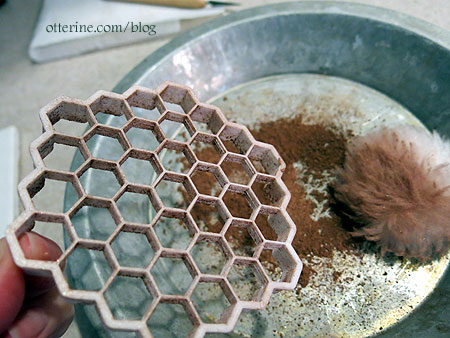
I pressed the cutter into the clay with a board.
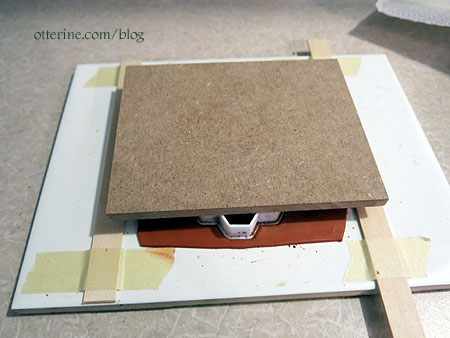
I patted the clay with a dry brush to remove some sheen and provide slight texture.
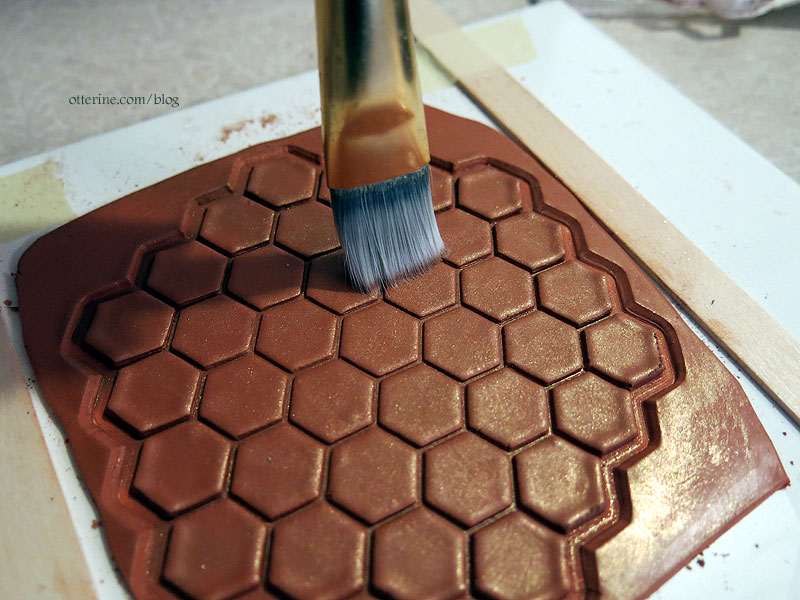
I shaved some pastels into a palette and dry brushed the tiles to vary the coloration. The chalk texture tones down the sheen, too. I used more on the later batches, and it looked better.
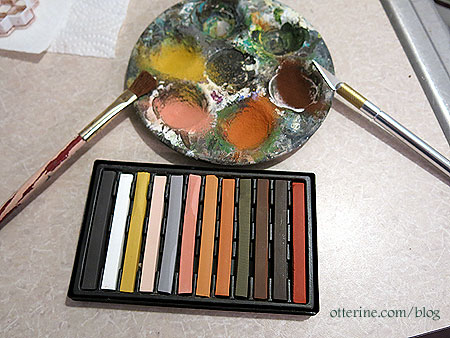
The cutter did not go all the way through, which was fine. The tiles around the edges aren’t usable because of the way the cutter is being used, but the middle ones turned out quite nice. I did cut away a lot of the scrap to reuse, but I baked the remaining shape intact otherwise. I’d rather cut the tiles apart after they bake instead of risking ruining them by cutting them before.
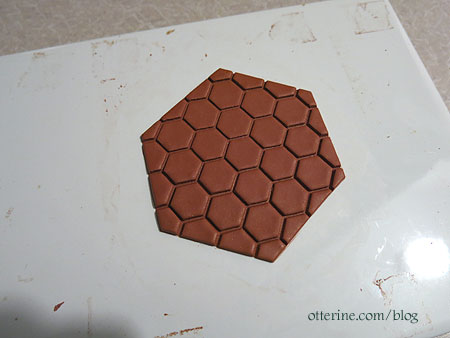
Choosing the baking time is always difficult for small, thin pieces of polymer clay, because you don’t want to burn the clay or end up with brittle pieces. I saw a video where 2mm strips (roughly 1/16 inch – the thickness I am making) were baked for 10 minutes and 60 minutes. The instructions on the clay package indicate baking 15 minutes per 1/4 inch. The video’s 10-minute sample snapped when bent and the 60-minute one was bendy and durable. I am going with 35 minutes to speed things along. After the first batch, I tested the clay after it cooled. It did eventually split when bent, but it took some force. For tiles that will be glued to a board, I called that a success.
I cut away the outer bits and left the main shape intact. I wanted to get a few batches done to see if I could lay them out in these large sections and then piece between them instead of laying tiles out one at a time.
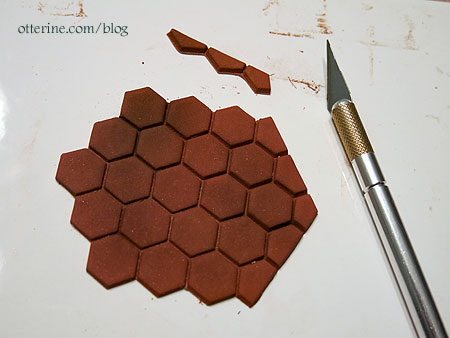
I saved the leftovers since I will have to piece around the edges.
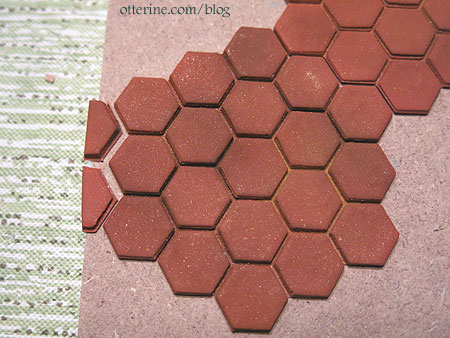
I have a lot to make! :O
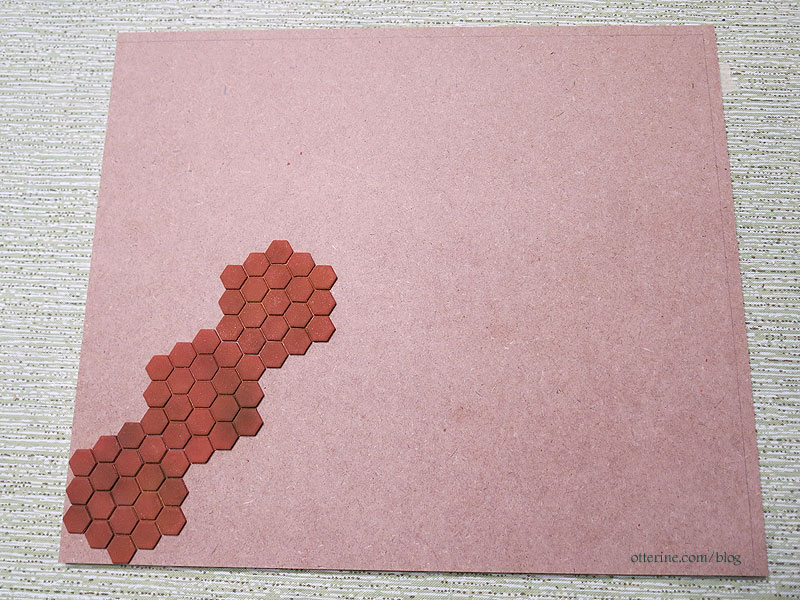
So, I started doing two at a time.
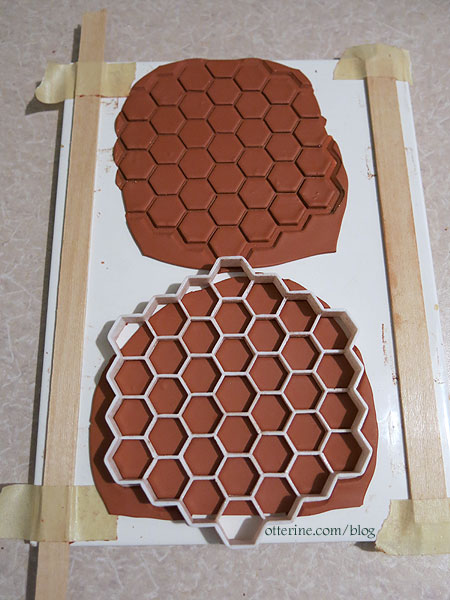
Categories: Polymer clay, Whinnie's Terrace
October 30, 2020 | 0 commentsGlass block window
I’ve started making a glass block window, and I am very pleased with the progress so far.

It looks like real glass.
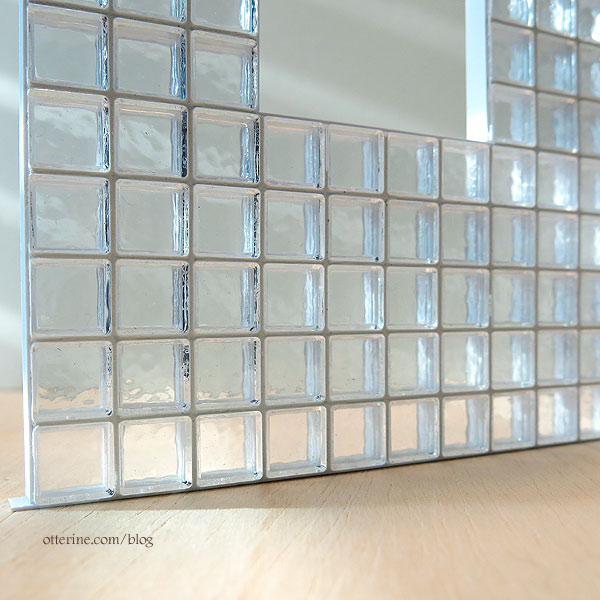
The surface is wavy like the real deal, too.

Next up will be figuring out an approximation of a hopper vent (the tiny window insert that allows for airflow). :D

I originally wanted a working hopper vent for the window, but in the interest of saving time, I opted to make a solid window for the middle. I could have filled in the space with more glass blocks, but I like the break in the pattern the window provides. I built the window from styrene sheet, styrene rod and rippled water sheet.
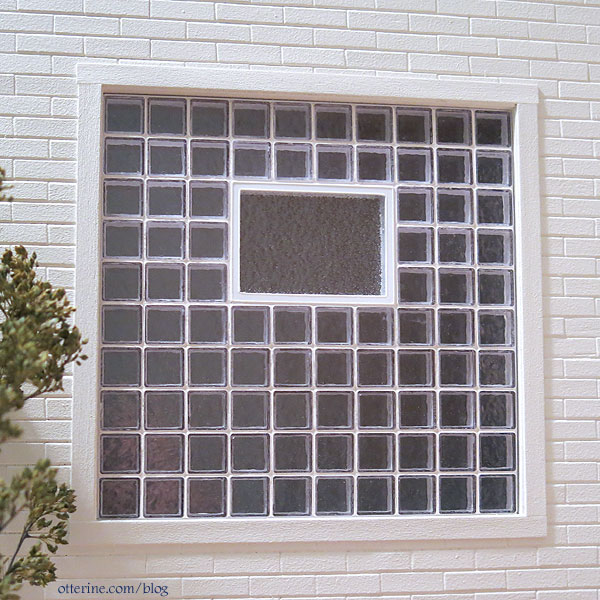
As you know, I freely share nearly every process when I make things with very few exceptions. This process is one of those exceptions, so there is no tutorial or materials list at this time.
Categories: Whinnie's Terrace
July 8, 2020 | 0 comments
NOTE: All content on otterine.com is copyrighted and may not be reproduced in part or in whole. It takes a lot of time and effort to write and photograph for my blog. Please ask permission before reproducing any of my content. (More on copyright)



